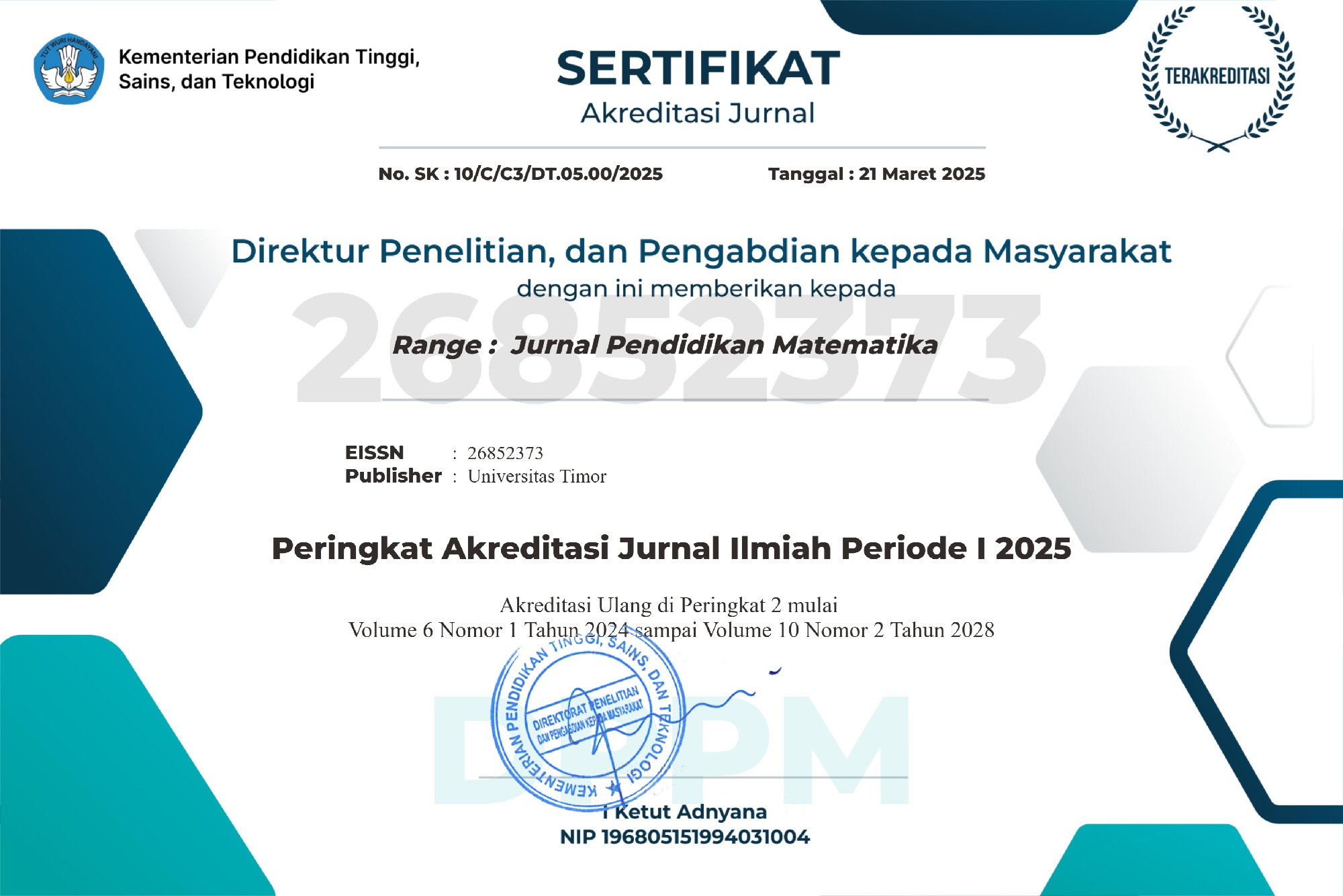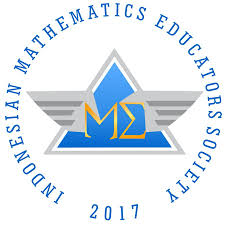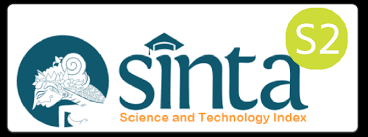Pencapaian Kemampuan Berpikir Geometri Tingkat Rendah Siswa: Analisis Berdasarkan Tipe Pembelajaran Kooperatif
DOI:
https://doi.org/10.32938/jpm.v2i1.557Keywords:
cooperative learning geometry thinking ability, low order thinking.Abstract
Two important elements in the learning process at school are how students' understanding and learning activities are. On the other hand, most students only memorize algorithmic formulas without understanding the concept in depth. As a result, students' thinking abilities at low levels become dominant in learning operations. This study was conducted with the aim of analyzing the achievement of students' low-level geometry thinking skills between the learning group of think pair share (TPS) and the two stay to stray (TSTS). This quantitative study was conducted on students in one of the junior high schools in the East Jakarta area. Data were obtained using instruments developed based on three initial levels of geometrical thinking according to van Hiele's theory. Data were analyzed with parametric statistics. The results of the data analysis concluded that there were differences in the achievement of the ability to think of low-level geometry students in the TPS and TSTS learning groups. Based on descriptive statistics, the average achievement of TPS group students is more than TSTS. According to the results of this study, learning the geometry of the triangle concept for junior high school students is suggested by learning TPS. There are indications based on the distribution of data that the level of thinking of students in geometry is mostly at the level of analysis.
References
Alghadari, F., & Herman, T. (2018). The Obstacles of Geometric Problem-Solving on Solid with Vector and Triangle Approach. Journal of Physics: Conference Series, 1132(1), 012046.
Alghadari, F., Herman, T., & Prabawanto, S. (2020). Factors Affecting Senior High School Students to Solve Three-Dimensional Geometry Problems. International Electronic Journal of Mathematics Education, 15(3), em0590.
Kurniasi, E. R., & Vebrian, R. (2019). Pengembangan Pembelajaran Drill and Practice Berbantuan Video Mata Kuliah Kalkulus Integral. AKSIOMA: Jurnal Program Studi Pendidikan Matematika, 8(3), 448-456.
Kusuma, A. P., Safa’udin, M., & Rahayu, R. (2018). Eksperimentasi Model Pembelajaran TPS dan TAI terhadap Hasil Belajar Matematika pada Materi Lingkaran. Jurnal Tecnoscienza, 3(1), 29-40.
Kusuma, A. P., & Maskuroh, M. (2018). The Differences of Mathematics Learning Outcomes between Think Pair Share (TPS) and Number Heads Together (NHT). Al-Jabar: Jurnal Pendidikan Matematika, 9(1), 19-24.
Laja, Y. P. W., & Retnawati, H. (2019). Apakah Think-Pair-Share Dapat Mengurangi Kecemasan Matematika Siswa SMP?. RANGE: Jurnal Pendidikan Matematika, 1(1), 57-62.
Liunome, A. V., Daniel, F., & Taneo, P. N. (2020). Motivasi Dan Prestasi Belajar Matematika Siswa Pada Pembelajaran Model Kooperatif Tipe TPS. RANGE: Jurnal Pendidikan Matematika, 1(2), 145-151.
Minarti, E. D., Wahyudin., & Alghadari, F. (2018). Student’s Conceptions and Geometry Problem-Solving of the Distance in Cube. Journal of Physics: Conference Series, 1132(1), 012033.
Murti, Y., Yuni, Y., & Zuhriyah, A. (2019). Perbedaan Hasil Belajar Matematika Siswa pada Materi Statistika antara Metode Tutor Sebaya dan Two Stay Two Stray. Prosiding Seminar Nasional Pendidikan STKIP Kusuma Negara, 2019, (pp. 1-6). Jakarta: STKIP Kusuma Negara.
Rahayu, T., & Alghadari, F. (2019). Identitas Bayangan Konsep Limas: Analisis Terhadap Konsepsi Matematis Siswa. Inomatika, 1(1), 21-30.
Rahmawati, N. K., & Hanipah, I. R. (2018). Penerapan Model Pembelajaran Kooperatif Tipe Think Pair Share (TPS) Dan Model Pembelajaran Kooperatif Tipe Student Team Achievement Division (STAD) Terhadap Hasil Belajar Matematika Siswa Pada Materi Garis Singgung Lingkaran. NUMERICAL: Jurnal Matematika dan Pendidikan Matematika, 43-48.
Rahmawati, N. K., Kusuma, A. P., & Suparman, P. (2020). Penerapan Model TSTS dan NHT Pada Materi Persamaan Fungsi Eksponen. Jurnal Pendidikan Matematika dan IPA, 11(1), 154-162.
Rosilawati, R., & Alghadari, F. (2018). Konsepsi Siswa pada Suatu Bentuk Bangun Ruang Terkait dengan Rusuk dan Diagonal Sisi. Prisma, 7(2), 164-176.
Sudirman, S., Son, A. L., Rosyadi, R., & Fitriani, R. N. (2020). Uncovering the Students’ Mathematical Concept Understanding Ability: a Based Study of Both Students’ Cognitive Styles Dependent and Independent Field in Overcoming the Problem of 3D Geometry. Formatif: Jurnal Ilmiah Pendidikan MIPA, 10(1), 1-12.
Tarwana, W., Alghadari, F. & Marlina, A. (2019). Meningkatkan Pemahaman Konsep Geometri Siswa melalui Pembelajaran Kooperatif Jigsaw. Prosiding Seminar Nasional Pendidikan STKIP Kusuma Negara, 2019, (pp. 1-7). Jakarta: STKIP Kusuma Negara.
Theresia, D., Syafi’i, M. & Vioreza, N. (2020). Pencapaian Kemampuan Low Order Thinking Siswa antara Pembelajaran Probing Prompting dan Matematika Realistik. Journal of Instructional Mathematics, 1(1), 31-37.
Van de Walle, J., Karp, K. & Bay-Williams, J. (2017). Elementary and Middle School Mathematics: Teaching Developmentally. USA: Pearson Education.
Downloads
Published
Issue
Section
License
RANGE: Jurnal Pendidikan Matematika














